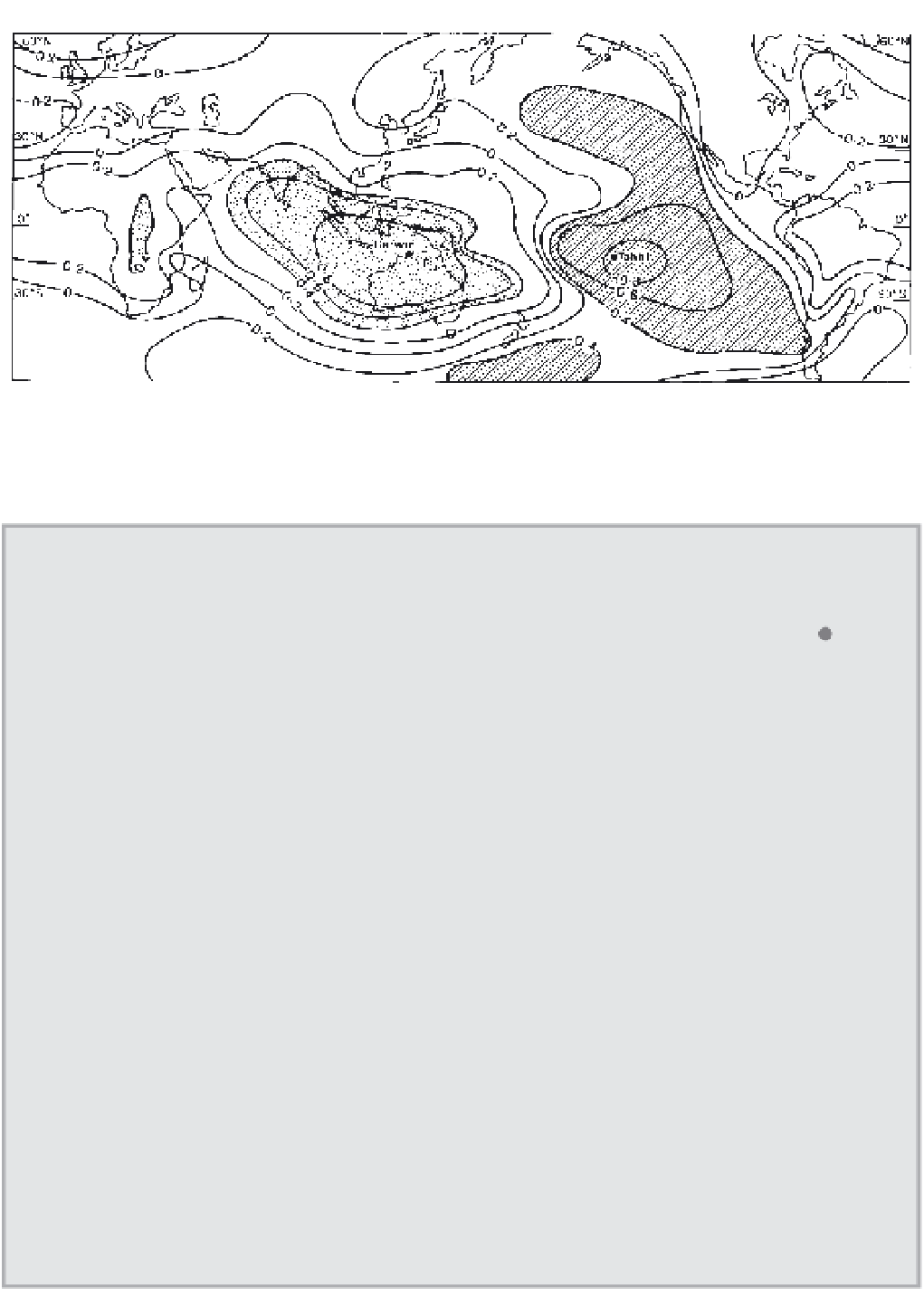Geoscience Reference
In-Depth Information
Figure 11.49
The correlation of mean annual sea-level pressures with that at Darwin, Australia, illustrating the two major cells of the
Southern Oscillation.
Source
: Rasmusson (1985). Copyright ©
American Scientist
(1985).
EL NIÑO AND THE SOUTHERN
OSCILLATION
box 11.1
topical issue
El Niño episodes of warm coastal currents with accompanying disastrous consequences for marine life and birds recur
about every four to seven years and consequently were long known along the west coast of South America.
The related Southern Oscillation (SO) of sea-level pressure between Tahiti (normally high pressure) and Jakarta (or
Darwin) (normally low pressure) was identified by Sir Gilbert Walker in 1910 and reinvestigated in the mid-1950s by I.
Schell and H. Berlage and in the 1960s by A. J. Troup and J. Bjerknes. A. J. Troup linked the occurrence of El Niño
conditions to an oscillation in the atmosphere over the equatorial Pacific in the 1960s. Their wider implications for
air-sea interaction and global teleconnections were first proposed by Professor Jacob Bjerknes (of polar front fame) in
1966 who noted the linkages of El Niño or non-El Niño conditions with the SO. The worldwide significance of ENSO
events only became fully appreciated in the 1970s to 1980s with the strong El Niño events of 1972 to 1973 and 1982
to 1983. The availability of global analyses showed clear patterns of seasonal anomalies of temperature and precipitation
in widely separated regions during and after the onset of warming in the eastern and central equatorial Pacific Ocean.
These include droughts in northeast Brazil and in Australasia, and cool, wet winters following El Niño in the southern
and southeastern United States.
The occurrence of ENSO events in the past has been studied from historical documents, inferred from tree ring data,
and from coral, ice core and high-resolution sediment records. The net effect of major El Niño events on global
temperature trends is estimated to be about +0.06°C between 1950 and 1998.
Reference
Diaz, H. F. and Markgraf, V. (eds) (1992)
El Niño. Historical and Paleoclimatic Aspects of the Southern Oscillation
. Cambridge
University Press, Cambridge, 476 pp.





